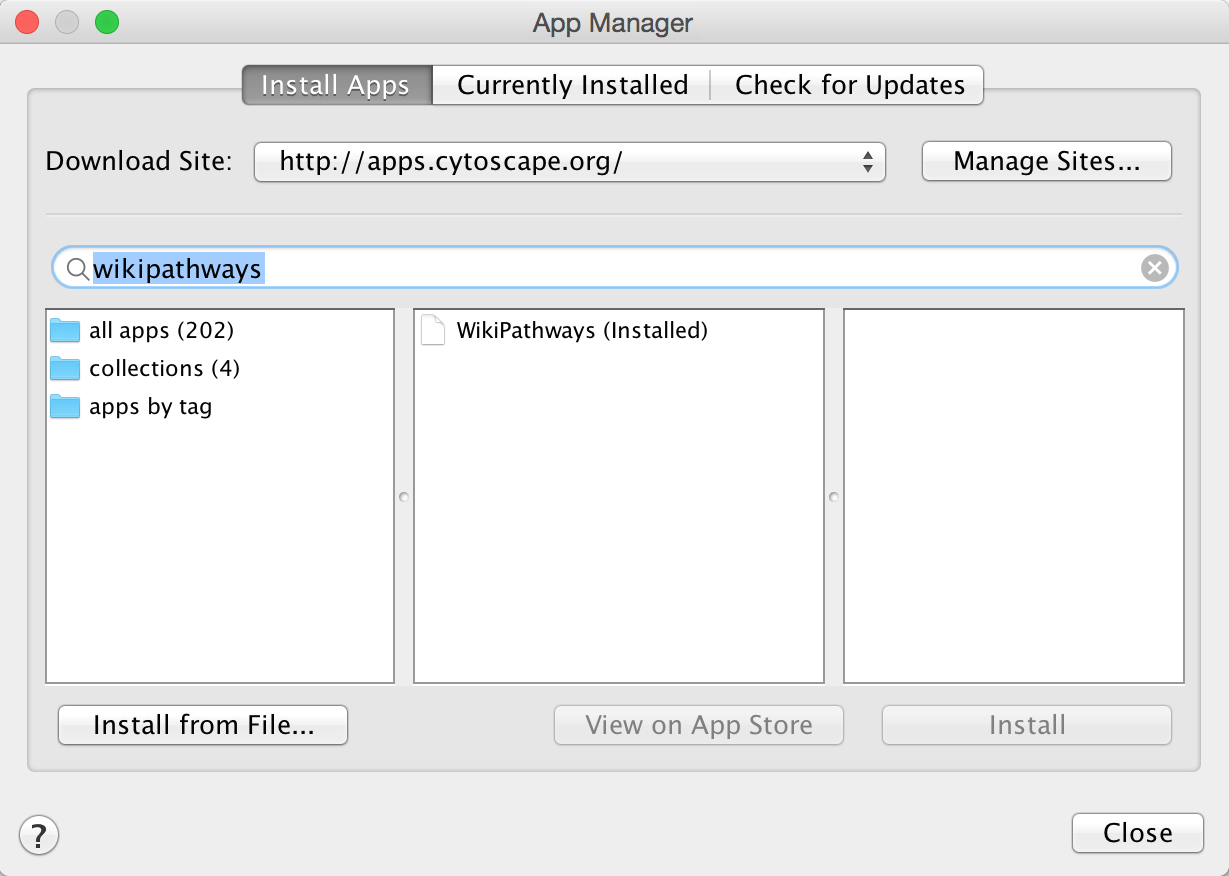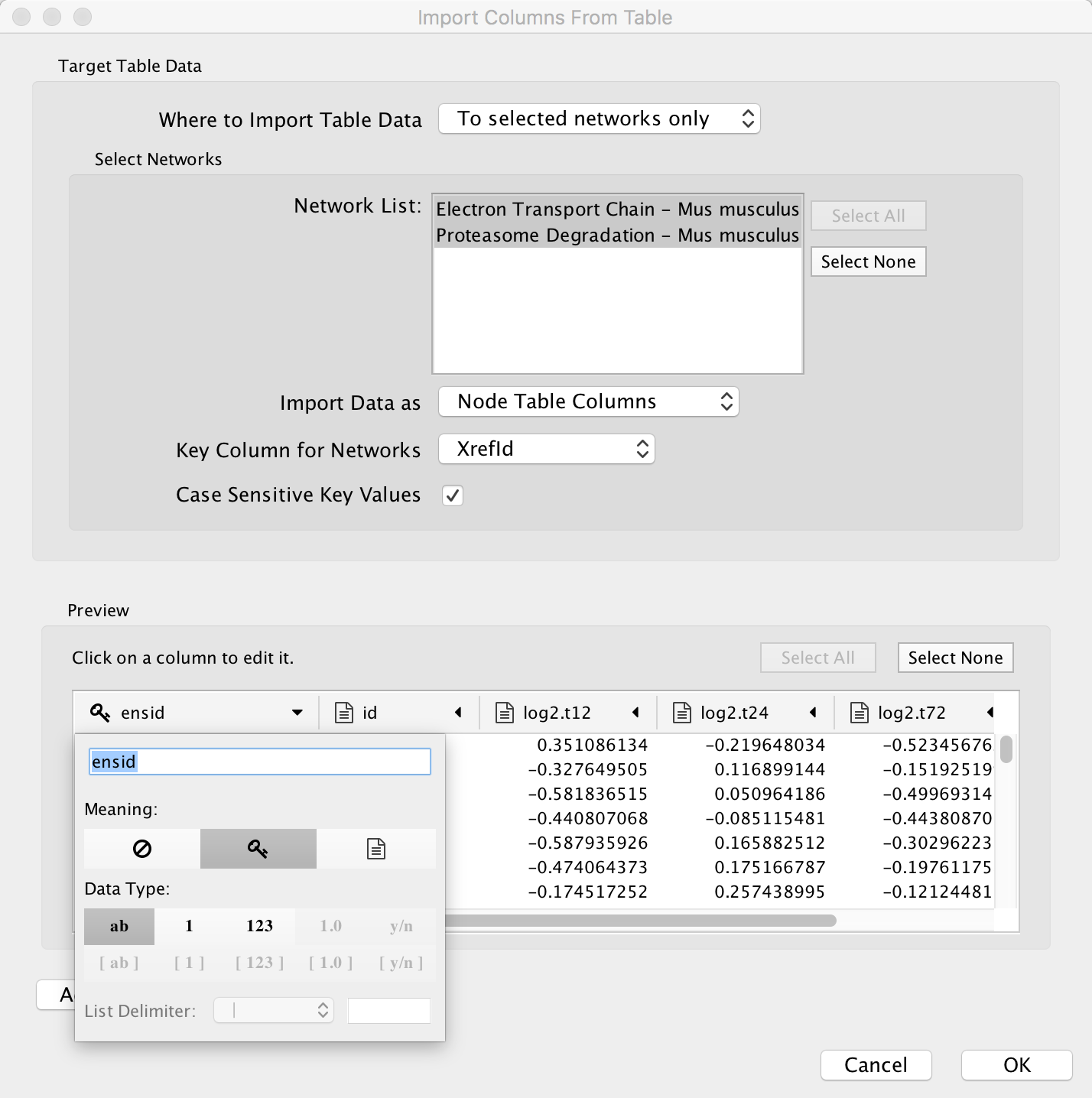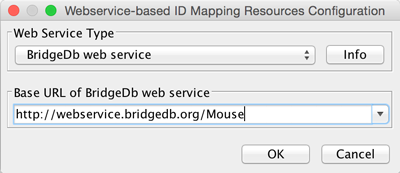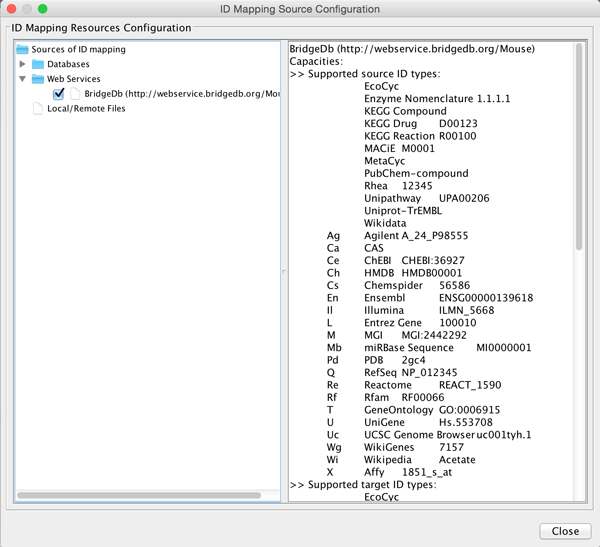Help:DataVisualizationInCytoscape
From WikiPathways
(→Data import and mapping) |
|||
| Line 9: | Line 9: | ||
* Launch Cytoscape | * Launch Cytoscape | ||
| - | === | + | === Cytoscape Apps === |
* In Cytoscape, open the '''App Manager''' under '''Apps > App Manager'''. | * In Cytoscape, open the '''App Manager''' under '''Apps > App Manager'''. | ||
Revision as of 19:40, 6 January 2016
UNDER CONSTRUCTION
This tutorial describes how to visualize experimental data on WikiPathways in Cytoscape. After importing the data, it is mapped to Ensembl identifiers using BridgeDb. A visual style is created, and the data is visualized on pathways imported from WikiPathways. Finally, over-representation analysis is done with the ClueGO app.
Contents[hide] |
Installation
Cytoscape
- Download Cytoscape here: http://www.cytoscape.org/.
- Launch Cytoscape
Cytoscape Apps
- In Cytoscape, open the App Manager under Apps > App Manager.
- In the search field, type WikiPathways to search for the WikiPathways app. In the search results, select the WikiPathways app and click Install.
- Next, find and install the BridgeDb app in the same way.
- Repeat the process for the ClueGO app. When the installation is complete, click Close to exit the App Manager.
Alternatively, Cytoscape apps can be installed directly from the Cytoscape App Store. If Cytoscape is open on your computer, you can click Install on the relevant app page, and the app will install.
Data import and mapping
Download the data
For this tutorial, we will use an example dataset of transcriptional profiling of mouse embryonic stem cells and embryoid bodies. The data is in the form of a text file.
The experimental data for this tutorial can be found here: MusMusculus_ES_EB.txt.
Data import
- To import the experimental data, select File > Import > Table > File.... Select the MusMusculus_ES_EB.txt file and click Open.
- Choose a name for the new data table, for example ES_EB. Click OK to import.
Identifier mapping with BridgeDb
Since the data is annotated with Affymetrix probe set identifiers, it needs to be mapped to a standard identifier type to visualize it on pathways. The BridgeDb app does exactly this, given a mapping file. Before performing the mapping, we have to import the appropriate mapping file to BridegDb.
- Open the BridgeDb app under Apps > BridegDb > Manage ID Mapping Resources.
BridgeDb works with mapping information from various sources. For example, y ou can either download a database here, and after extracting it you can select it under Databases in the ID Mapping Resouces Configuration interface. You can also supply a local or remote mapping file. For this tutorial, we will use Web Services for the mappings.
- Click on the Web Services entry in the list of ID mapping sources.
- In the Webservice-based ID Mapping Resources Configuration interface, select BridegDb web service in the drop-down.
- In the Base URL of BridgeDb web service drop-down, select the entry for mouse. Click OK to continue.
You will see a listing of supported ID systems, note that Affymetrix is listed.






